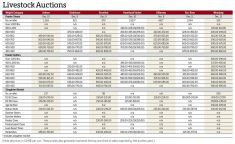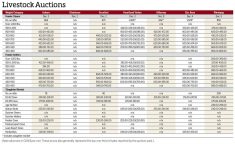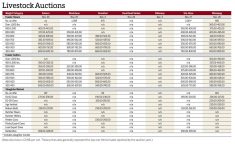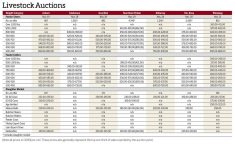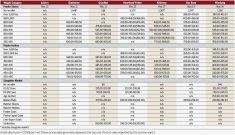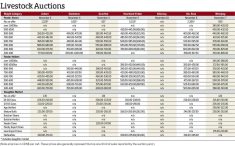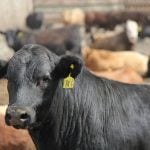Prices for cattle moving through Manitoba’s auction yards held relatively steady during the week ended June 11, although activity was slowing down for the summer.
Good rains during the week across much of the province should help ease concerns over dry pastures and forage crops, although more moisture will be needed going forward.
Strong demand for beef has kept fed cattle prices in Western Canada well supported, but high feed grain prices continue to cut into profits in the feeder sector, according to CanFax analyst Brian Perillat.
Read Also

Foggy grain market predictions for 2026
Many factors are pushing and pulling at grain markets as farmers leave 2025 behind and start considering what 2026 will bring.
“We’re seeing awesome beef demand, both domestically and in the United States, so feedlots, after losing money for two to three years, are making money… which supports the overall market,” he said.
Feeder cattle prices have also shown some strength, but not nearly as much as the grain market, with high feed costs “taking a bite out of calf prices,” according to Perillat.
Prairie weather conditions and their impacts on grain and forage production will be followed closely over the next few months. Perillat expects that strong beef demand and tightening North American cattle numbers have left room to the upside in cattle markets; however, he said, high feed prices could temper any advances.
Feeder calf sales are typically slow at this time of year, with not much moving through the markets. The lower volumes tend to underpin prices for what does move, but the sector will be watching to see how things will shake out by the fall run.
“We’re definitely keeping our eye on the weather and grain markets,” Perillat said.
Recent rains have eased some dryness concerns “but it’s so dry that people will need more (rain) fairly soon if they’re going to maintain grass and their cattle numbers.”
He expected that cattle prices in the fall should be equal to year-ago levels, with plenty of room to the upside given the strong beef demand and tightening herd numbers.
“Our cattle market in Western Canada has been incredibly strong,” Perillat said, noting that while the United States was facing a backlog of fat cattle waiting to be slaughtered due to COVID-related struggles at packing plants, Canada has tighter numbers and has even been bringing in U.S. feeders due to increased profits north of the border.
“We just have to watch the feed costs and the dollar,” he added. Relative strength in the Canadian dollar as it nears 83 U.S. cents could have an influence on the domestic market as well.




